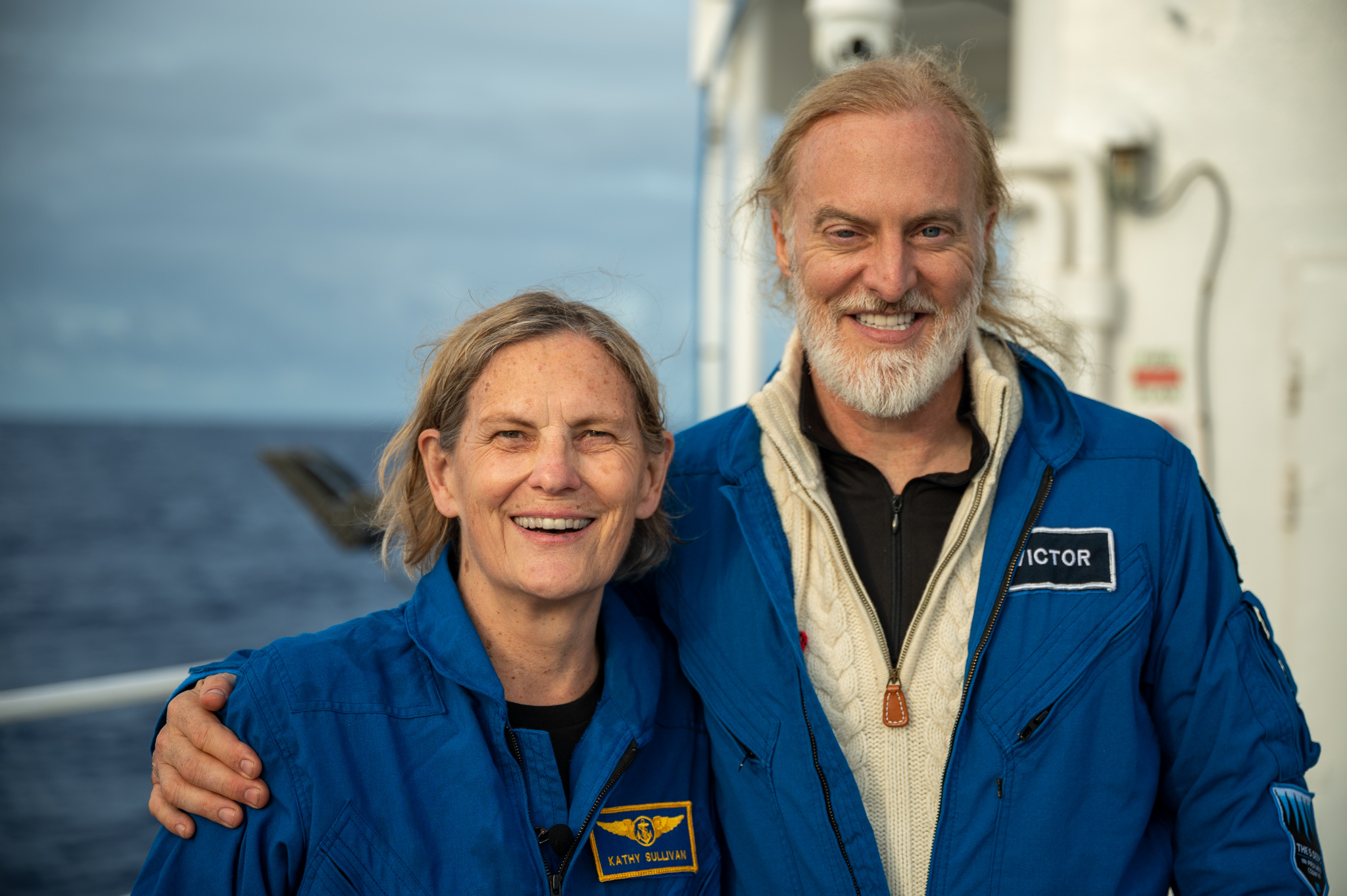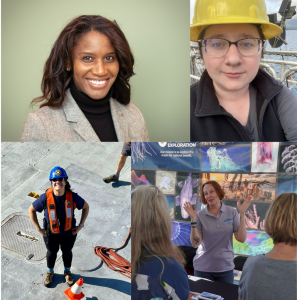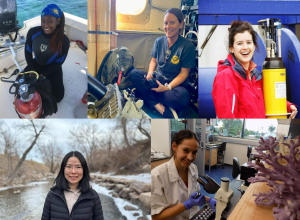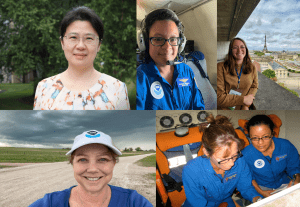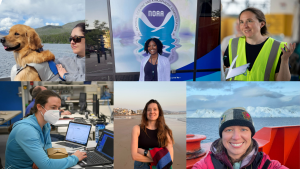NOAA partner collects quarry of deep ocean sound and mapping data
Barely had the ink dried on the partnership agreement signed by NOAA and ocean explorer Victor Vescovo, owner of Caladan Oceanic LLC, when his team headed out to the Pacific Ocean to dive and map the Mariana Trench, and answer the questions — how deep and where exactly is the bottom of the ocean.
Vescovo made several dives to the bottom of Challenger Deep in the Mariana Trench in June, considered the deepest place in the global ocean. Vescovo generously shared the data and scientific information that Caladan collected during its expedition with NOAA. NOAA Corps Commander Sam Greenaway, based in Hawaii, is now crunching data from the dives to measure the depth of the deepest point in Challenger Deep.
“It’s a great data set and will be exciting to update the answer of “how deep is the ocean” with at least a five-fold increase in precision,” said Greenaway. “I’m also confident that the ship-based mapping of the trench, the high-resolution profiles of Challenger Deep, and the huge suite of conductivity, temperature and depth data will open many new lines of inquiry.”
National strategy to map vast U.S. underwater territory
Earlier this year, the National Ocean Policy Council developed a national strategy to fully map, explore and characterize the resources of our nation’s 3.4 million nautical square miles of underwater territory, called the U.S. Exclusive Economic Zone, which includes the Mariana Trench. To date, we have mapped only 43% of our underwater territory to modern standards. NOAA is forging partnerships with explorers, businesses, philanthropic and academic groups to meet this goal over the next decades. Revealing the mysteries of America’s ocean backyard is expected to unleash the full potential of our waters for economic growth, marine environmental protection, human health, improving climate and weather prediction, and national security.
Vescovo took a few special guests on his dives to the dark and murky bottom of the ocean. Former NOAA Administrator and NASA astronaut Kathryn Sullivan and Kelly Walsh, son of Don Walsh, who with Jacques Picard, was the first to descend to the bottom of the Mariana Trench in 1960, each joined Vescovo in his manned submersible, Limiting Factor.
While there is an estimate of Challenger Deep’s depth — about 7 miles down — there is a lively debate over the exact depth and location of the deepest point. In addition to Picard and Walsh in 1960, movie-maker James Cameron descended to the trench bottom in 2012. Vescovo has now made the descent eight times as part of his “Five Deeps” and subsequent “Ring of Fire” expeditions that started in 2018 and continue today. He has piloted Limiting Factor to the deepest points in the five named ocean basins as well as the first, second, and third deepest points on the seafloor – the Challenger, Horizon, and Nero Deeps.
So why is it important to know how deep this trench is?
“I think it’s basic human curiosity,” said Greenaway. “It’s a question a seven-year-old would ask — how deep is the ocean or how far away is the moon.”
Greenaway adds that answering the question requires expertise from across NOAA. He is working with NOAA’s National Ocean Service for tide analysis, NOAA’s Satellite and Information Service for gravity modeling, and NOAA Research’s Pacific Marine Environmental Lab to understand instrument calibrations used to measure the depth and pressure. Vescovo has been coordinating with NOAA’s Office of Ocean Exploration and Research regarding areas of mapping interest and sharing data Caladan collected during its expedition in the Mariana Trench and other parts of the ocean. NOAA’s National Centers for Environmental Information will archive the data for the public.
Listening to deep ocean sounds
Caladan’s mission in the Mariana Trench this summer also gave NOAA a chance to listen to the sounds heard in Challenger Deep. Vescovo and Sullivan brought down a specially designed NOAA hydrophone able to withstand the pressure at the bottom, one thousand times the atmospheric pressure we feel on earth. The hydrophone recorded a total of 12 hours of sound over four days from June 21 to 25, picking up a distant moan of a fin whale, the hum of a container ship passing overhead and the rumble of a 4.7-magnitude underwater earthquake. That sound traveled 4,200 miles underwater from off the Kermadec Islands, a territory of New Zealand.
“We know that shipping has declined during the global pandemic and we wanted to see if there was a difference in natural or human-caused sound levels this summer as compared to 2015,” said NOAA oceanographer Bob Dziak, who took the first and only other recordings at the bottom of the trench in 2015.
Early analysis of the data shows little difference in noise levels between 2020 and 2015. “After all, it is a relatively remote area,” Dziak said. The recording information will be useful to NOAA, which is participating in a larger research project about how ocean sound and marine life has been affected by the economic slowdown. The whale recording will enable NOAA to better identify whale species when combined with DNA samples taken from surface waters.
Partners essential to mapping goal
Vescovo and several other NOAA partners — Vulcan, Ocean Infinity, Schmidt Ocean Institute, Ocean X — are playing key roles in helping map the US Exclusive Economic Zone. Often they are doing it as part of their own work and sharing mapping data with NOAA and the public.
Early in August, Vescovo was exploring in the waters off the Aleutian chain and decided to use his ship’s full ocean-depth mapping system, which is attached to the bottom of his ship, to map the Aleutian Trench in detail for the first time in history, making two passes over the 2,100 mile underwater canyon that runs along the Aleutian Islands and is known for earthquakes that have generated tsunamis.
Vescovo indicated that he intends to provide the mapping data to NOAA and the General Bathymetric Chart of the Oceans, the international program that produces the most authoritative publicly-available bathymetry of the world’s oceans. It operates under the joint auspices of the International Hydrographic Organization and the Intergovernmental Oceanographic Commission of UNESCO.
“I talked it over with my captain and Cassie Bongiovanni (Caladan’s chief mapping scientist) and after a great deal of thought, I agreed with them that this was just too important for science and helping the country map its seafloor to pass up,” Vescovo said. “I just didn’t know when – if ever – someone would be back this way with a sonar of this capability. As I tell people, sometimes you just have to take personal responsibility to do the right things that need doing. Maybe it’s the Texan in me.”
Retired Navy rear admiral Tim Gallaudet, Ph.D., assistant secretary of commerce for oceans and atmosphere and deputy NOAA administrator, acknowledged the value of Vescovo’s expeditions: “Victor’s decision to do two passes on the Aleutian Trench is of great service to our nation. This falls into so many of NOAA’s priorities including ocean mapping, exploring, public private- partnerships, the Presidential Memorandum on Ocean Mapping, the Alaskan and national seafloor mapping strategies, and technology innovation.”
For more information, please contact Monica Allen, NOAA Research Director of Public Affairs, at monica.allen@noaa.gov or 202-379-6693.
